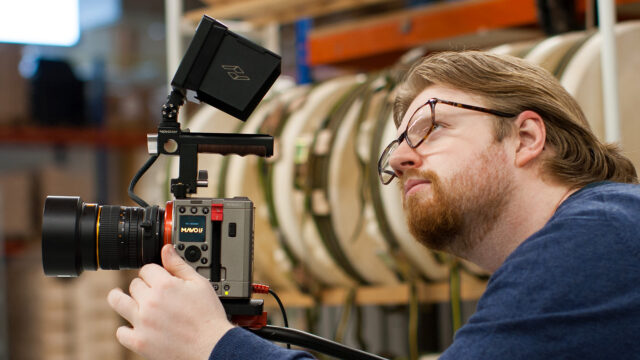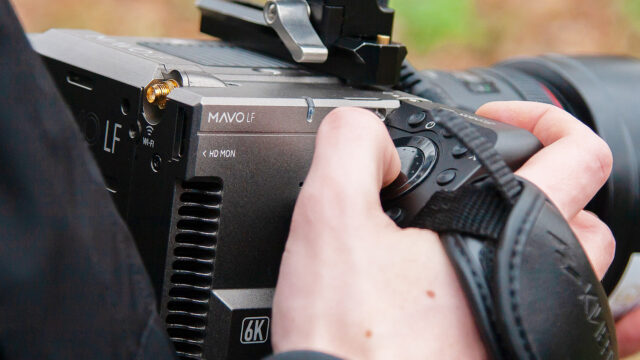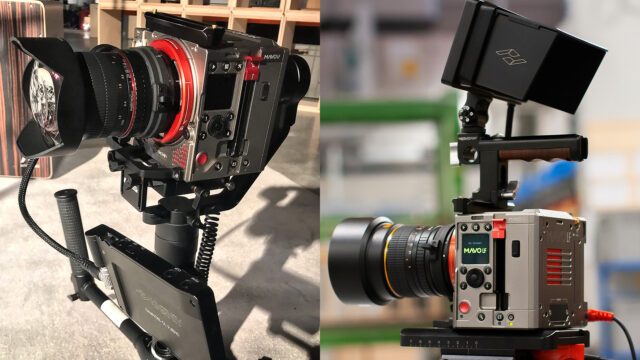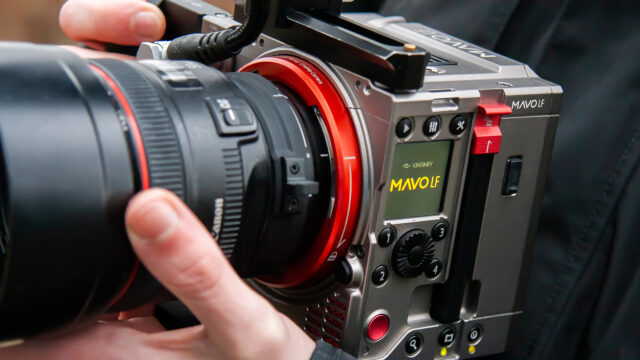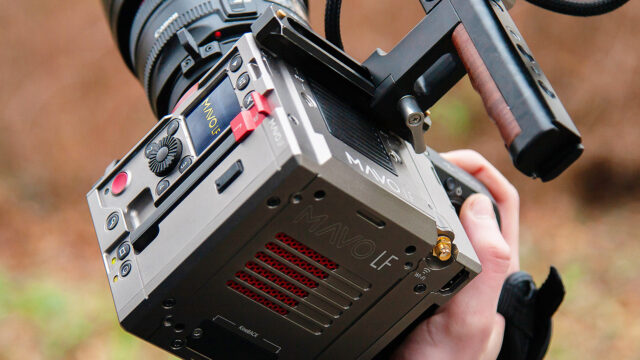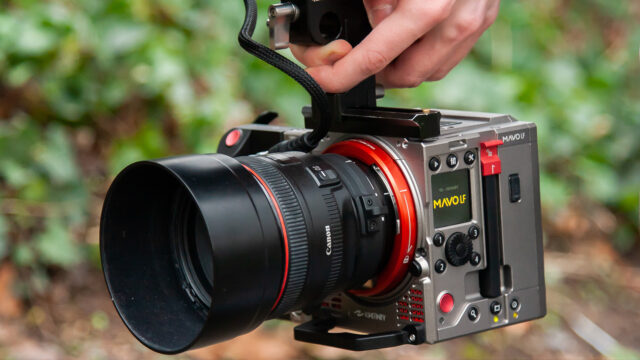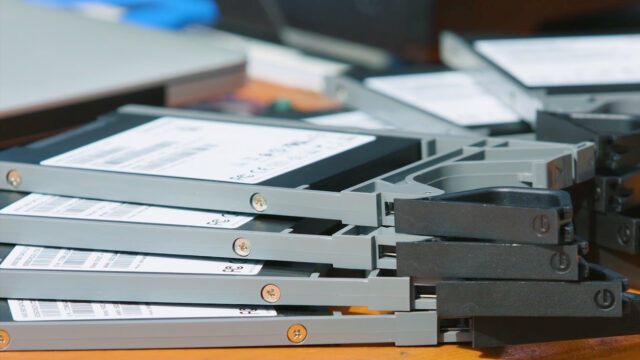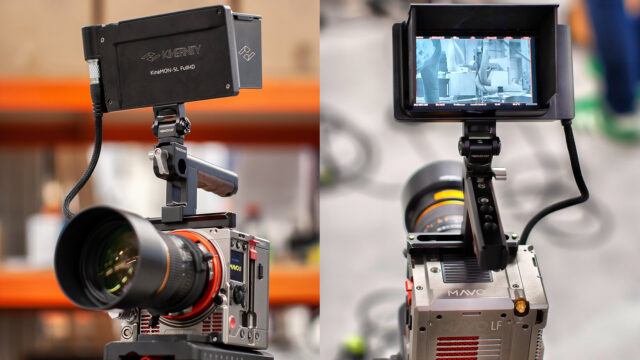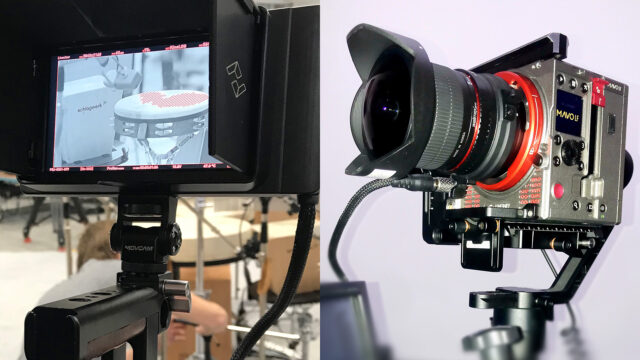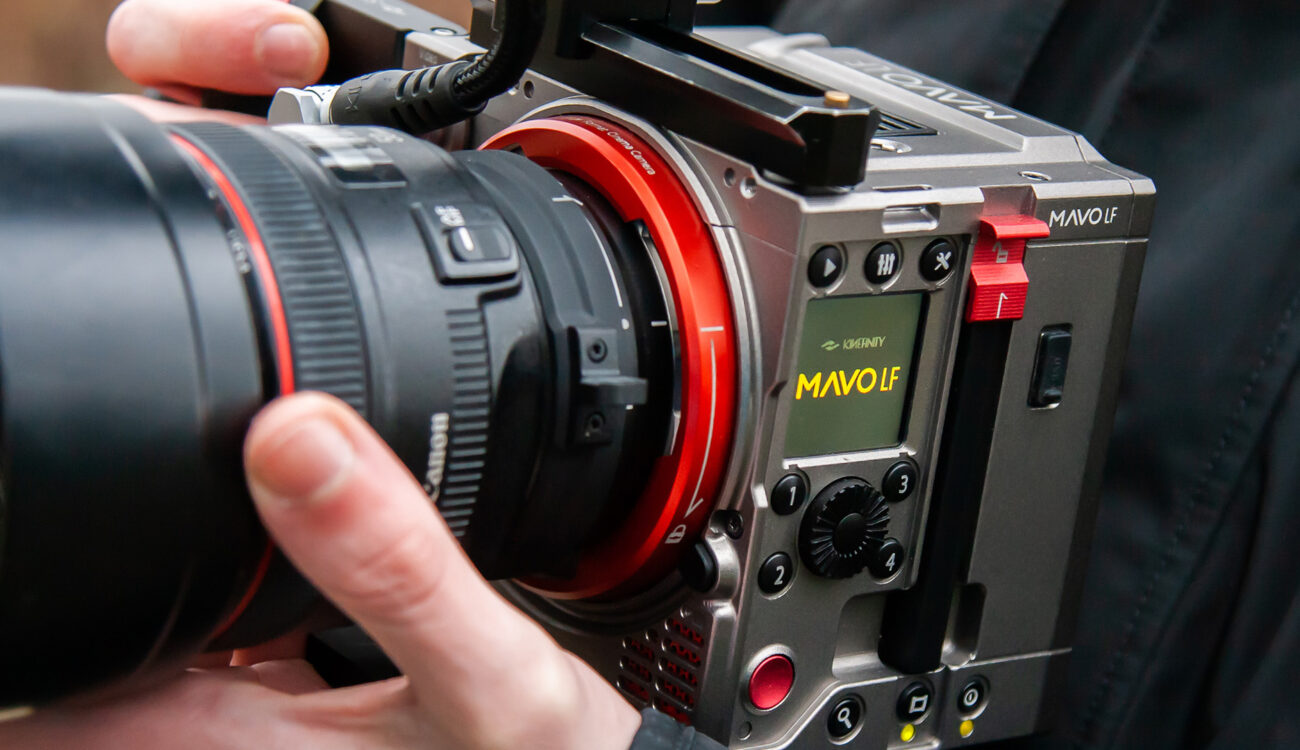
A comprehensive review of the Kinefinity MAVO LF 6K (3:2) camera. “Large Format” is still the big thing as more cameras participate in the knockout process against the ARRI ALEXA LF and Mini LF. We have taken a close look at handling, ergonomics, functionality, tech specs and real-world practice experiences with it. How did the camera perform?
The Kinefinity MAVO and MAVO LF cinema cameras are built on the same image processing platform, use an advanced color processing architecture with the latest ColorScience and state-of-the-art CMOS image sensors. The MAVO is equipped with an S35 sensor, while the MAVO LF as a large format version is equipped with a 6K (3:2) sensor. Both cameras achieve very low noise and high dynamic range. My production company Altruist Films and I had the opportunity to shoot some productions with the Kinefinity MAVO LF and test it extensively.
Production & Testing Environment
We were able to test and evaluate the Kinefinity MAVO LF within multiple real-world environment shoots, ranging from music performances to image and product-related productions, over several weeks. We’ve been able to thereby test the camera in comparison or relationship to multiple cameras from Sony, Canon, Blackmagic Design and even action cameras.
Essential Features & Large Format Sensor
It was clear from the very first second I held the camera: with just less than 1kg (body only) it’s a real lightweight among the high-resolution cinema cameras, maybe similar to the Z Cam E2 (our review is coming soon) and future Z Cam models.
The 6K and even the 4K image of the MAVO LF look very sharp – without being digitally resharpened – and deliver an organic-looking, pleasing image. Since there is always an extensive discussion of relative sharpness amongst cinematographers and some argue for more realistic or softer organic sharpness, while others rely on and favor more precise or even ultra-sharp images, everyone should, of course, make up his mind about this. I particularly liked that the 4K image looked sharper in a more subtle appealing way than other cameras.
The MAVO LF with large-format sensor produces cleaner images, covers an extensive section of a 46mm image circle and, thanks to the large sensor, of course, offers less depth of field, which creates many aesthetic design possibilities with appropriate lenses. It should also be noted that the large-format sensor with its exact dimensions of 36mm x 24mm is now ~2.25x as large as a standard S35 sensor and the dimensions of the ARRI ALEXA LF sensor of 36.7mm x 25.54mm are very close.
Resolutions, Dynamic Range and Aspect Ratios
According to the manufacturer, the dynamic range reaches more than 14 f-stops, which exceeds the performance of the Sony PXW-FS7 and was similar to the range of the Blackmagic Design Ursa Mini Pro 4.6K in my experience. (We haven’t put the MAVO LF through our rigorous cinema5D dynamic range and rolling shutter tests yet but will do that at a later stage.)
In addition to the usual standard aspect ratios of 16:9 and 17:9 (DCI), a variety of other image formats, such as 6:5 S35 (for anamorphic recording), 4:3, and up to 24 MP at full sensor use in 3:2 image ratio can also be selected in the menu.
One of the essential features is that the MAVO LF 6K (6016 x 4016px, native resolution with sensor format 3:2) can record HFR in 6K (Wide) at up to 75fps (from 6fps in 1-frame steps freely adjustable) and 4K slow motion up to 100fps (Wide, 4096 x 1720px) and up to 75fps (4K DCI, 4096 x 2160px) respectively.
Modularity, Handling, and Ergonomics
The camera system of the Kinefinity MAVO LF is designed as a modular lightweight cinema camera system. The cube shape and angular construction are most reminiscent of RED cameras or the Z Cam E2 and are designed for a few control knobs only as well as a SideGrip with an essential steering wheel.
A considerable advantage of the modular design is that the MAVO LF can even be used on light-built gimbals. In our case, it was used on a Zhiyun Crane 2 for many shots – without straining the engine too much.
I have reduced the camera substantially for this purpose by detaching modules such as the handle, and attached the monitor via a video cable with a Magic Arm to an additional rod of the gimbal and was thus able to balance the camera well and move it quite freely.
Controls, Symbols & Logic
Anyone who has relied on established camera systems from major manufacturers for years or decades has become accustomed to the intensity, sensitivity, position, button types and inherent or learned logic of the symbols and controls.
Those mentioned above are well-established manufacturers such as Panasonic, Canon, ARRI or Sony, which have extensive experience and knowledge in building long-lasting camera platforms, thanks to an army of engineers. They have built an enormous customer base with advanced academies or training platforms. On top of that, they have accumulated many loyal followers for their products and some are so attached to those brands that one could argue they even worship these manufacturers or their products. (The worshipping part is also true for “newer” disruptive brands like RED …)
Of course, symbols, arrangement, and controls must first be learnt anew with the TERRA, MAVO or MAVO LF, but newbies to the Kinefinity system can also operate it after a very short time without any restrictions, and the desired selections can be made accurately and quickly.
Synchronization Options & Power Supply
The MAVO LF offers Tally, AutoSlate, Beeper, Trigger and with KineBACK-W SMPTE LTC and 3D/Multi-cam Sync as options for synchronization in a multi-camera setup. With the SideGrip as an additional handle with battery slot “GripBAT” 45Wh (BP-U30 compatible) for power supply, the camera can reach a real operating time (standby and recording) of more than 1 hour.
RAW, Compression and Codec Selection
With the Kinefinity MAVO LF, you can use different codecs for recording and further processing in color grading suites like Blackmagic Design DaVinci Resolve. Especially the proprietary KineRAW 2.0 (.krw) (with a compression ratio of approx. 2:1 to 10:1) and CinemaDNG (.cdg) (compression ratio 3:1, 5:1 or 7:1) with 12 bit color depth should be mentioned. These formats – and especially the widely used CinemaDNG – initially offer maximum freedom in design and simplify the workflow through standardized processes, as they are also used for the further processing of material from leading cinema camera manufacturers.
For my real-world recordings (apart from experiments and tests), I used Apple ProRes HQ4444 (12 Bit). As expected, the created files could be easily processed within the Adobe Creative Cloud. ProRes422HQ/422/LT/Proxy, ProRes4444 and ProRes4444XQ are available for selection in the camera.
Dual ISO & ISO Values
Essential differences to the predecessor model MAVO above all result from the new full-frame sensor. These also include that there now is a Dual-Base ISO: 800 ISO (under 2000 ISO as the base) and 5120 ISO (from 2000 ISO as the base). At the same time, the signal-to-noise ratio (SNR) has been improved. In my tests, ISO values of 800, 1600, 2560 and 3200 were pleasant to use. 5120 ISO should still be acceptable for some applications.
Higher ISO values can also be used well if the target is a down-converted result (e.g. HD, 2K, 4K). Since the pixel spacing has increased due to the larger sensor (50% larger than with the MAVO) and thus disadvantages of too small and too close pixels have been improved compared to the predecessor, the MAVO LF has become more light-sensitive in relation to its predecessor.
Media / Storage Solution
Even without accessories and modular add-ons, recording on SSDs of all common brands can be started immediately. In the test, I used a Samsung SSD that was included but not certified by Kinefinity, as well as SSDs from other leading manufacturers such as SanDisk, Crucial and Transcend without making any compromises. Notable is that only SSDs up to 7mm height can be used. Relay and simultaneous recording are not possible inside the camera housing, because only one SSD slot is installed.
If, however, the KineBACK-W is used as an optional add-on module, the signal can also be displayed externally on monitors via 2x 3G-SDI connectors and recorded with recorders in lower resolution (and limited frame rate). Therefore both backup and 2nd recording options in full quality are currently not possible.
First Impressions from Post-Production
Our first impression from the post-production is that the camera delivers pleasant skin tones, can be easily graded with the image material of different other cameras, and shadow details and highlights are well preserved in the shot with low noise and can, therefore, be edited suitably.
Community: Questions on Errors and Crashes
I have been asked via social media several times how many crashes and technical errors I experienced when using and recording with the camera. Although I recorded many hours of footage and used the camera on several days over long standby times – sometimes in a very dusty and temporarily heated environment, sometimes changing a lot in the menu and trying it out freely – I only had one non-reproducible problem.
After switching on the camera again, it was suddenly not possible to record onto a SanDisk SSD with a displayed error message. We exchanged the SSD, and the problem was solved immediately. All data was entirely stored on the previously used SSD, no data loss occurred, and the error never happened again.
For more security, the manufacturer recommends using certified KineMAG+ SSDs. The SSD workflow turned out to be speedy overall and very pleasant when offloaded or directly installed in a server and, above all, very inexpensive thanks to non-proprietary SSDs. I didn’t have any drop frames or other technical errors or missing files.
KineMOUNT and Adaptors
With a pretty short flange focal distance (FFD) or flange back distance (FBD) of just 15mm, it can be seen that the manufacturer wants to enable versatile adaptability to other common lens mounts. The proprietary KineMOUNT, which is at the same time the original lens mount of the Kinefinity TERRA, is used as the interchangeable mount. Thus, an essential and worthy discussion point about this camera is the lens mount.
This mount is shorter than many standard mounts (e.g. Sony E-Mount – 18mm, Sony FZ-Mount – 19mm, Canon EF-Mount – 44mm, Nikon F-Mount – 46,5mm, ARRI PL-Mount – 52mm). Thus in the newly designed form, it allows that new PL mounting adapters with /i Technology and Nikon F adapter, new wireless EF adapters, EF adapter with KineEnhancer, EF/PL adapter with electronic ND (e-ND), new SONY FE/E adapters, and more are supported. In my tests I mainly used EF lenses from various manufacturers without any problems.
Camera Operation: Wishes, Demands, and Expectations
In my experiments and tests, I was especially impressed with the useful focusing aid, a reasonable exposure function, additional control options via the SideGrip (optional) and a solid black-and-white display for accurate sharpness adjustment including color peaking.
As a filmmaker, of course, you have many demands on technology nowadays, and many would undoubtedly wish for future Kinefinity cameras to have more functions, which are currently only accessible in the menu, moved to the outside of the camera via additional buttons.
Another wish would be that the sensitivity of the click wheels, the control symbols, and logic could be adapted even more to known standards. Here the high sensitivity of the SideGrip wheel has been explicitly noticed, which could perhaps become even more sophisticated with newer firmware versions in the future or through constant further development of the pushbuttons, switches, and wheels.
Sensitivities like these, which we have already experienced with other manufacturers and sometimes even over several version numbers, remained similar until a change was made much later. It would also be desirable to have (at least) a touchscreen control of critical camera functions using the monitor, which would increase the operating options and facilitate the speed of selection.
Verdict
The camera is suitable as a portable, lightweight cinematographer’s tool of choice and can be used in reduced camera setups with gimbals and bigger drones. Thanks to its high image resolution and sharpness, it can also be explicitly used for Visual Effects Shots, where the high resolution and the free selection of available aspect ratios can be of particular benefit. Therefore, the subjectively high-rated overall image quality can and should be emphasized again.
A central aspect of the conclusion for me is to show here for which areas of application I consider the camera to be particularly suitable. These are independent productions, working in small teams or professional productions in which, on the one hand, sufficient time is available for the setup and, on the other hand, the highest degree of reliability is not necessarily required. It’s also suitable when conventional and fully established workflows are not priority factors. If you have to have more standardized workflows, KineRAW shouldn’t be used, and you can switch to ProRes, which of course simplifies the workflows a lot.
Where 6K acquisition is used for 4K delivery and a budget for a suitable Sony VENICE or RED is not available, it would be an option to include the Kinefinity MAVO LF in the final selection round. The service from and contact to the European representation in Berlin should was extremely helpful and positive, but we of course always recommend to take a close look at the camera before a possible shoot.
We recommend to shoot tests and get a better idea of the screen and controls to enjoy the best possible outcome from the first production. I didn’t have to exclude any filmed footage from post-production because of lack of experience, and with a little practice, I was able to create high-quality images with the MAVO LF.
Links: MAVO LF – Kinefinity
